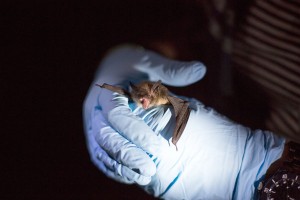
A new study suggests that the brains of several small mammals, including those of the little brown bat, have grown bigger as humans have altered the animals’ living conditions.
Photo by Evan McGlinn, NY Times.
Have a look at this article which appeared in the New York Times on August 22, 2013. It explains how brains of some small mammals are actually enlarging over time, due to adapting to human impact on the environment! This article is a great example of how museums collections can answer important research questions. It also shows that we often don’t know what type of research will use our collections. No one thought of this particular adaptation in mammal brains until this recent research was conducted. And there would have been no way to document this change without the availability of museum specimens. The researcher had to measure skulls of mammals from a century ago, to compare with modern skulls, and where else are you going to find 100 year-old mammal skulls but in a museum!? This also explains why we keep our research specimens in archival conditions and minimize handling of them. It would be really frustrating to go to measure century old mammal skulls and find them broken and unsuitable for accurate measurements.
What type of future research will make use of museum collections!? Who knows, but since technology is changing rapidly there’s no doubt that new and exciting research will be making use of the world’s carefully preserved museum collections!
Thanks to Brad Lepper for bringing this article to my attention!